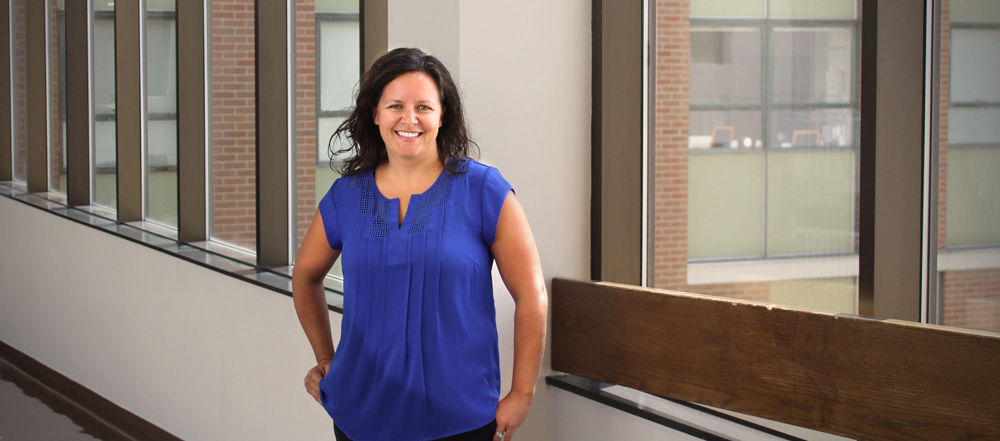"Decrease in Inpatient Telemetry Utilization Through a System-Wide Electronic Health Record Change and a Multifaceted Hospitalist Intervention"
J Hosp Med 2018
Edholm K, Kukhareva P, Ciarkowski C, Carr J, Gill D, Rupp A, Morshedzadeh J, Wanner N, Kawamoto K
2015, Karli Edholm led a system-wide reduction in telemetry monitoring, a costly and at times unnecessary test. This frequently ordered observation tool monitors a patient’s heartbeat using 3 to 12 electrodes stuck to the chest and stomach. Wires from each electrode run to a device on the chest, often hindering movement and sleep.
In 2013, the Society of Hospital Medicine and the Choosing Wisely campaign published guidelines to limit continuous telemetry monitoring outside of the ICU. Health care systems found that 70% or more of their non-ICU, non-cardiac patients had telemetry when their conditions did not require it. Telemetry costs money and time—millions of dollars each year and hundreds of hours for nurses managing the equipment (and false alarms).
Before Karli leaves Utah for Montana, she sat down with Accelerate’s Mari Ransco and Kim Mahoney to share her lessons for leading improvement projects.
#1 Start with your own frustration
Before we started this project, a quarter to a third of the hospitalist’s patients were on telemetry every day.
On rounds, I ask residents to describe what they have learned from labs, procedures, and tests. For a year and a half, I would ask, “So what'd the tele (pronounced tellie) say?” Most of the time, residents couldn’t answer me. Usually, the night float intern had ordered the monitoring because they were worried about a patient. What I saw is that we had hooked a patient up to a heart monitor and then ignored it. I would ask the intern or resident, “We’ve been monitoring every beat of this patient’s heart for the last 24 or 48 hours—what did it show?”
I spent extra time teaching the intern or resident how to use the equipment, when inevitably telemetry showed that the patient’s heart was normal. So we’d take the patient off telemetry. I had seen a presentation from another academic medical center about reducing telemetry use, and I thought, “We should try this here!”
Honestly, I was annoyed at having the same conversation four times a day. Less telemetry meant I could be more efficient every day. I wouldn’t have to interrupt my rounds all the time, wasting less time and making my life easier.
It made sense for our system, too. We're putting all these patients on this monitor, charging them hundreds of dollars per day, and often we’re not even using the information it provides.
Now, we have guidelines that actually dictate when we should use telemetry. Before, we were really overutilizing it.
The Value Equation
Karli’s work led to a 69% decrease in telemetry utilization among hospitalist service patients, and a 22% reduction on other services. This cost reduction translated to a less expensive hospital stay. Quality of care held steady with no significant increases in mortality, code event rates, or care escalation.
View the Value Summary.
#2 Improve with process, build a team, and use data as feedback
I was enrolled in Value Improvement Leaders, so we followed the value improvement methodology with the help of our coach, Frank Thomas. My team, including Jack Morshedzadeh in Cardiology, completed a process map, a gemba walk, and a chart review. We then investigated what others had done in other academic centers.
Our solution included a change in Epic. Before a physician can complete the order for telemetry, they must state the reason for the monitoring and how long it will last. The order for telemetry will then expire at the chosen time, instead of continuing indefinitely.
The hospitalist group helped refine the process. It wasn’t challenging to convince them. We’re all pretty cohesive; if one of us decides to work on something, we’re all on board. I said, “Here are the guidelines—and we’re not using them.” A couple of case reports described harm that occurred from unnecessary telemetry because of false positives or because delirious patients were hooked up to this equipment and then fell.
Providing monthly feedback was important for our progress. It kept telemetry on our radar in the midst of other improvements. That way, we were reminded to discuss it during rounds.
#3 Stick with it—Seeing progress over time fuels passion for the work
I’ve learned that passion for the project is critical. Sustained improvement takes so much longer than you think it will, and passion for the work carries you through. It’s a particular motivation—yes, I care deeply about patient safety. But really, I knew I had something to gain from this change.
You need to know what you will gain from an improvement project because it can be frustrating and time-consuming. You think, “This isn’t that big of a deal—it should be a pretty easy change.” Then it stretches out to a year or more. Everyone already has so much on their plates, and now we’re asking people to do new things. Sometimes you’re just waiting for approval. It’s easier if you’re working on projects that make your patients safer but also make your job more efficient and less frustrating.
Karli Edholm
Hospitalist Ryan Murphy and Value Engineer Luca Boi outline four questions to address at the outset of any improvement.
Not even the most gifted leader can lead change alone. No one person can come up with the strategy, communicate across the organization, eliminate all the barriers, and manage dozens of change initiatives. In order for transformation to succeed, you need a guiding coalition.
What can we do right now to make our work environment better? Chief Wellness Officer and family medicine physician Amy Locke shares a simple team-based model for identifying opportunities, sorting what’s feasible and impactful, and empowering the frontline to lead change.
